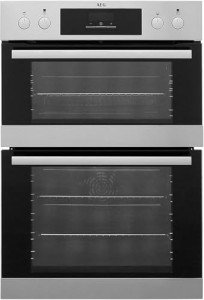Integrated Oven Tools To Improve Your Life Everyday
The Integrated Oven: A Comprehensive Guide
In modern-day kitchen areas, the pattern toward incorporating appliances with kitchen cabinetry to develop a seamless look has gotten significant traction. Among built in double oven and gas hob packages , the integrated oven stands apart as a favored alternative for numerous house owners and culinary enthusiasts. This post checks out the advantages, features, and considerations associated with integrated ovens, in addition to answering typically asked concerns.
What is an Integrated Oven?
An integrated oven is a type of built-in oven that is designed to be flush with kitchen cabinetry. Unlike freestanding designs, which often stick out by themselves, integrated ovens are concealed or partly hid, offering a smooth and cohesive visual to the kitchen area. These ovens are available in various styles, consisting of single, double, and steam ovens, and can be integrated with shelves and cabinets for boosted storage.
Benefits of Integrated Ovens
Incorporating an oven into your kitchen design can use many advantages. Here are some benefits of selecting an integrated oven:
Space-saving Design:
- Perfect for smaller cooking areas, integrated ovens make the most of area utilization, leaving more space for other appliances or storage.
Aesthetic Appeal:
- The flush installation produces a structured, contemporary appearance that can elevate the total ambiance of a kitchen.
Customizability:
- Integrated ovens can frequently be personalized to match cabinets or to include special features such as pull-out shelves.
Boosted Functionality:
- Many integrated ovens come geared up with innovative cooking technology, such as smart programs and convection heating, improving cooking results.
Increased Property Value:
- An integrated oven can boost the value of a home, appealing to prospective purchasers who are interested in contemporary, well-appointed kitchen areas.
Picking the Right Integrated Oven
When selecting an integrated oven, different elements should be thought about to guarantee that the model fits your cooking requirements and kitchen design. Below are some crucial factors to consider:
Size and Capacity:
- Check the dimensions of your kitchen space. Standard sizes generally range from 60cm to 90cm in width, with capabilities varying based upon how numerous meals you normally prepare.
Type of Oven:
- Decide in between traditional, convection, and steam ovens. Convection ovens are popular for their even heat distribution, while steam ovens maintain wetness for better-flavored meals.
Functions:
- Look for functions that suit your cooking style. Some performances to consider consist of:
- Self-cleaning choices
- Smart technology combination
- Multiple cooking modes
- Security features
Energy Efficiency:
- Opt for energy-efficient models that consume less electrical power while using high performance.
Budget:
- Integrated ovens are available in different rate ranges. Determine your spending plan while thinking about the longevity and sturdiness of the appliance.
Function
Advised Model
Explanation
Self-Cleaning Function
Yes
Saves time and effort maintaining cleanliness
Convection Cooking
Yes
Enhances heat circulation for even cooking
Smart Technology
Optional
Permits control from mobile phones or voice assistant
Numerous Cooking Modes
Yes
Flexibility in cooking various meals
Energy Rating
A/A+
Ensures lower energy intake
Setup and Maintenance of Integrated Ovens
Appropriate setup and upkeep are crucial for ideal oven efficiency. Here are some actions to consider:
Installation Steps
- Preparation: Ensure you have all the needed tools and products before beginning the installation.
- Procedure the Custom Space: Confirm the fit of the oven versus the cabinets.
- Connect to Power Supply: Consult an electrician for safe electrical connections.
- Leveling: Ensure the oven is level to prevent cooking disparities.
- Connect Cabinet Panels: If required, connect ornamental panels for a customized appearance.
Upkeep Tips
- Regular Cleaning: Frequent cleaning avoids food accumulation and ensures the oven runs effectively.
- Examine for Damage: Inspect the door seals and interior for signs of damage frequently.
- Service Regularly: Schedule professional servicing to maintain efficiency and efficiency levels.
- Follow Operating Instructions: Always comply with producer standards for operation and upkeep.
Regularly Asked Questions (FAQs)
What is the distinction between a built-in oven and an integrated oven?
While both types are developed to fit into cabinets, built-in ovens can stand out a little, while integrated ovens sit flush with surrounding cabinets.
Are integrated ovens more pricey than conventional ovens?
Normally, integrated ovens can be more expensive due to the design and features that accommodate a smooth build into the kitchen.
Can I replace my existing oven with an integrated oven?
Yes, however ensure to think about the size and any adjustments required for your kitchen cabinetry and kitchen layout.
How long do integrated ovens normally last?
With correct upkeep, integrated ovens can last anywhere from 10 to 15 years or longer.
Do integrated ovens need special setup?
Integrated ovens typically require professional installation to ensure they are fitted correctly with suitable connections and safety steps.
Integrated ovens offer a sophisticated and efficient option for modern-day kitchen areas, boosting aesthetic appeal while offering innovative cooking capabilities. By carefully examining features, setup, and upkeep, homeowners can select an integrated oven that best suits their cooking needs and design choices. With the many designs and types available, anyone can attain a functional area that matches their cooking way of life, making the integrated oven an outstanding financial investment for any home.
